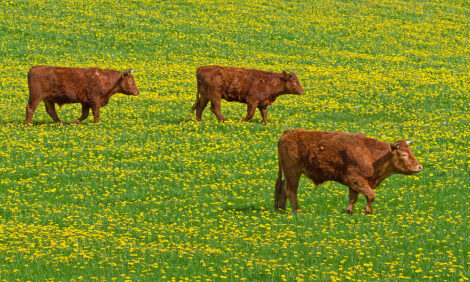



All Farms Can Reduce Costs By Using Forage
UK - Every farm has the potential to reduce its costs by increasing milk from forage, a study using data from 50 herds has found.This is irrespective of yield and can offer protection against price volatility, according to findings from Shropshire based P&L Agri-Consulting.
Between March 2013 and 2014, the data showed for every extra 1,400litres produced per forage hectare, farms saw an average decrease in cost of production (COP) of 1ppl.
Such potential savings will be crucial for many farmers facing reduced returns for their milk with this data set showing an average COP of 30.01ppl.
P&L Agri-Consulting’s Sarah Hardman says the data clearly showed that most farms could address COP by paying closer attention to milk produced per forage hectare.
“There was no correlation between yield and COP with some herds producing over 9,000litres/cow/year with COP in the top 25 per cent and some herds under 5,500litres/cow/year in the bottom 25 per cent,” she says.
“However, there was a very strong correlation between yield from forage per hectare and COP (see graph) with both high and low yielding herds able to reduce costs by making better use of forage.”
Many herds were able to produce over 8,500litres/cow/year and still achieve over 6,500litres from forage per hectare. This shows that high utilisation of forage can be achieved even at high yields.
Yield per forage hectare is calculated by multiplying milk from forage/cow/year by stocking rate. Miss Hardman views this is a much better indicator of efficiencies compared to milk from forage/cow/year as it gives a better idea of how well a farm is making use of its land area. All farms should be targeting 3,000litres from forage/ cow/year or at least 6,000litres per hectare.
With purchased feed being the largest variable cost on most farms, all of the top 25 per cent of producers were also able to reduce their feed use and thus COP by getting more from forage. These herds varied in performance from 4,700litres to 9,700litres/cow/year.
“All of the top 25 per cent of farmers for COP put a value on grazed grass and regularly monitored grazing in order to make management decisions. This shows that to truly maximise milk per forage hectare, cows must to grazed,” comments Miss Hardman.
P&L Agri-Consulting director Phil Clarke explains how COP data also highlighted concerns over housing cows full time to increase yields and dilute costs and showed grazed grass had a role to play in most systems.
“More intensive systems tend to spend more on feed, but analysis across systems showed for every additional 1ppl spent on feed, the business also spent a further 0.6ppl on associated costs such as machinery and labour,” comments Mr Clarke.
A dilution in overhead costs in housed, intensive systems was actually not seen until herd size exceeded 400 cows at yields over 10,500litres. This shows that any herds below this size and yield should be looking at ways to use grazed grass to produce the majority of summer milk.
“The lowest overhead costs per litre were seen on all year round calving systems that grazed all cows in the summer. They were able to maintain high yields in excess of 8,000litres without the costs of housing all year round,” says Mr Clarke.
“This data shows that most farmers have the potential to decrease their COP by focusing on increasing pasture utilisation, simplifying their system and reducing labour, power and machinery costs.”
TheCattleSite News Desk


